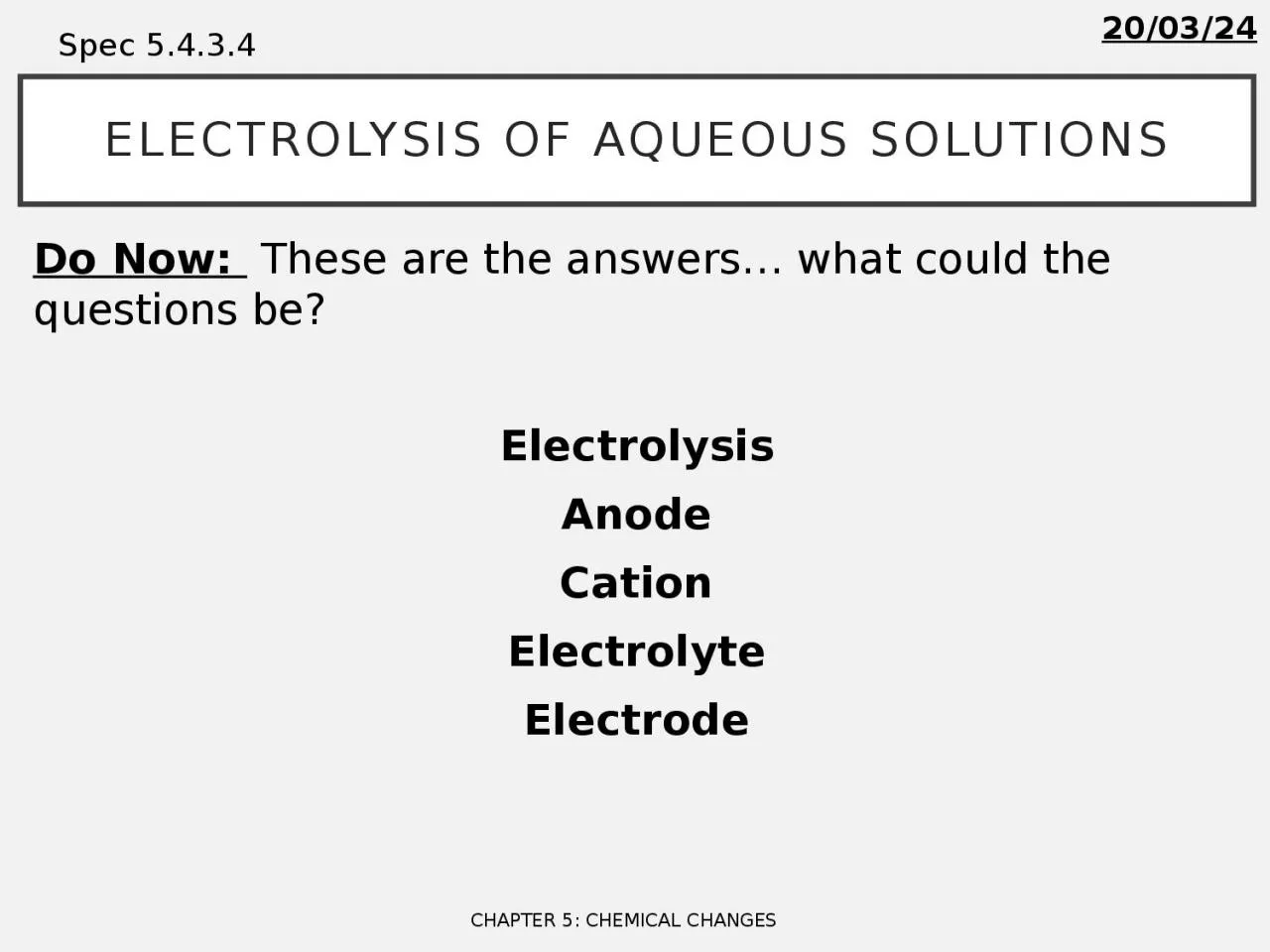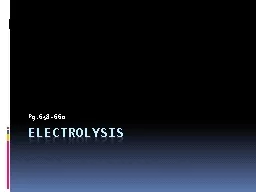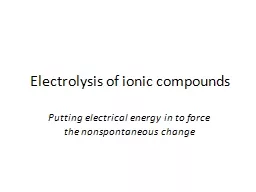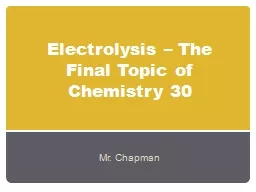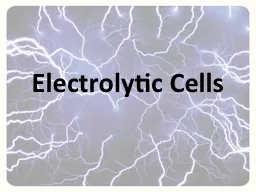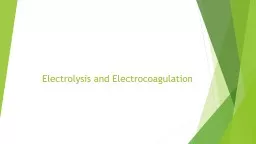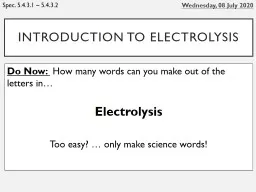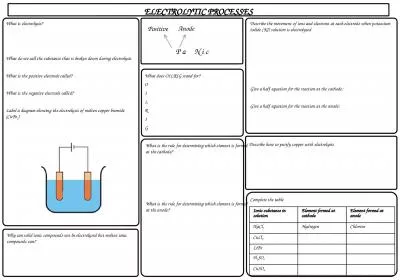PPT-Electrolysis of aqueous solutions
Author : dandy | Published Date : 2024-03-13
Monday 05 October 2020 CHAPTER 5 CHEMICAL CHANGES Do Now These are the answers what could the questions be Electrolysis Anode Cation Electrolyte Electrode Spec
Presentation Embed Code
Download Presentation
Download Presentation The PPT/PDF document "Electrolysis of aqueous solutions" is the property of its rightful owner. Permission is granted to download and print the materials on this website for personal, non-commercial use only, and to display it on your personal computer provided you do not modify the materials and that you retain all copyright notices contained in the materials. By downloading content from our website, you accept the terms of this agreement.
Electrolysis of aqueous solutions: Transcript
Download Rules Of Document
"Electrolysis of aqueous solutions"The content belongs to its owner. You may download and print it for personal use, without modification, and keep all copyright notices. By downloading, you agree to these terms.
Related Documents

